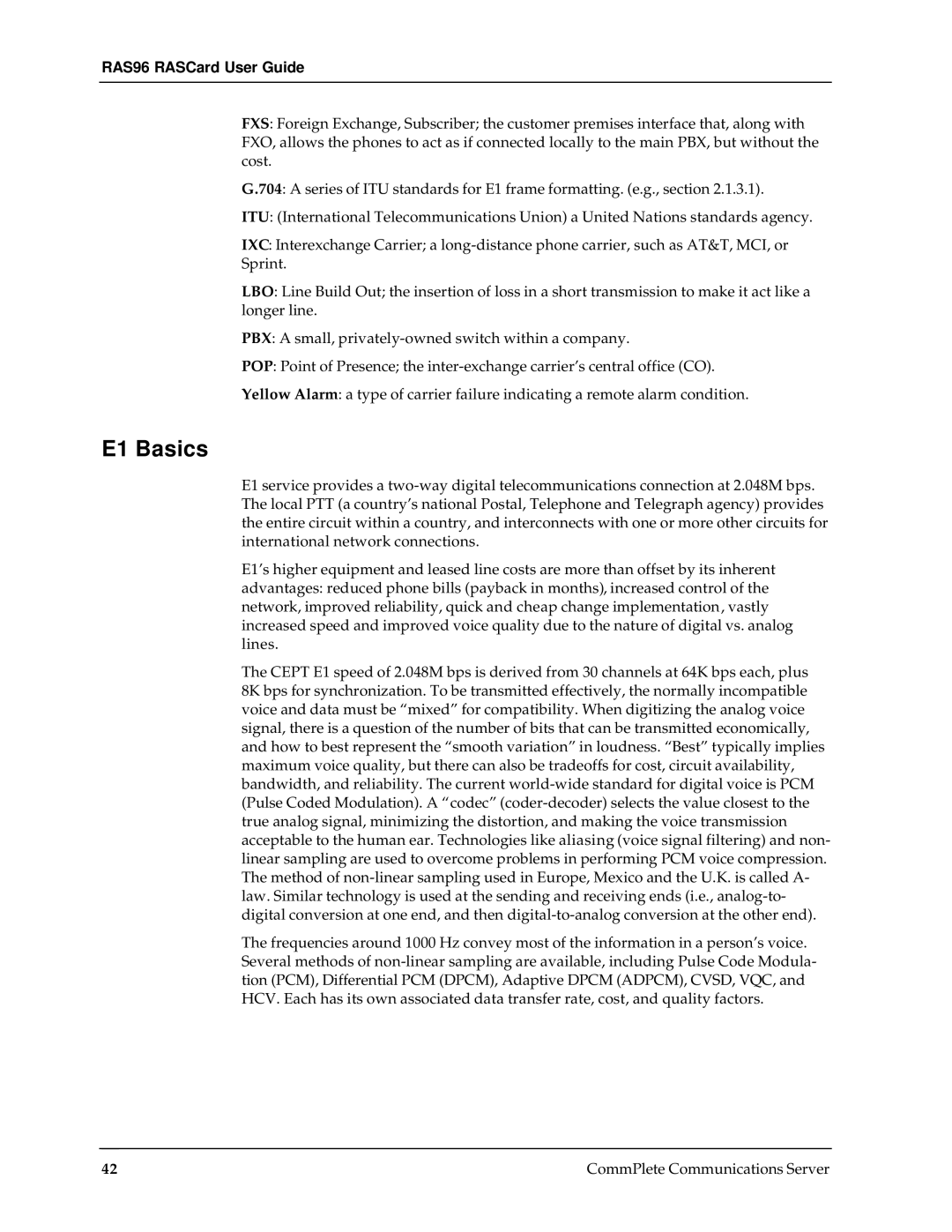
RAS96 RASCard User Guide
FXS: Foreign Exchange, Subscriber; the customer premises interface that, along with FXO, allows the phones to act as if connected locally to the main PBX, but without the cost.
G.704: A series of ITU standards for E1 frame formatting. (e.g., section 2.1.3.1).
ITU: (International Telecommunications Union) a United Nations standards agency.
IXC: Interexchange Carrier; a
LBO: Line Build Out; the insertion of loss in a short transmission to make it act like a longer line.
PBX: A small,
POP: Point of Presence; the
Yellow Alarm: a type of carrier failure indicating a remote alarm condition.
E1 Basics
E1 service provides a
E1’s higher equipment and leased line costs are more than offset by its inherent advantages: reduced phone bills (payback in months), increased control of the network, improved reliability, quick and cheap change implementation, vastly increased speed and improved voice quality due to the nature of digital vs. analog lines.
The CEPT E1 speed of 2.048M bps is derived from 30 channels at 64K bps each, plus 8K bps for synchronization. To be transmitted effectively, the normally incompatible voice and data must be “mixed” for compatibility. When digitizing the analog voice signal, there is a question of the number of bits that can be transmitted economically, and how to best represent the “smooth variation” in loudness. “Best” typically implies maximum voice quality, but there can also be tradeoffs for cost, circuit availability, bandwidth, and reliability. The current
The frequencies around 1000 Hz convey most of the information in a person’s voice. Several methods of
42 | CommPlete Communications Server |
